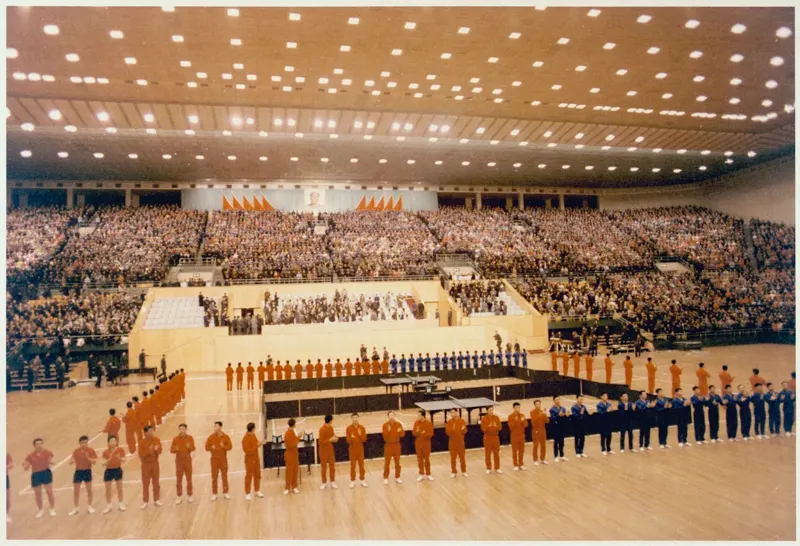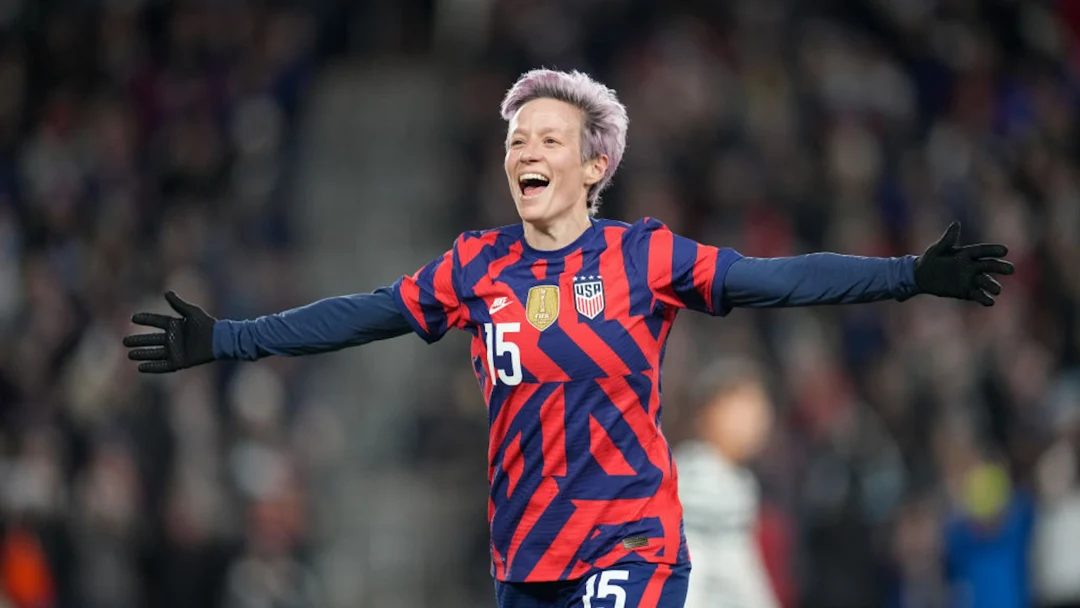Soccer, known as football in most parts of the world, is more than just a sport; it’s a universal language that transcends geographic and cultural boundaries. This beautiful game can bring people together from all corners of the globe, fostering a sense of unity and camaraderie that few other phenomena can match.
In this article, we delve into the profound impact of soccer culture, exploring how it breaks down barriers and connects individuals worldwide.
1. The Global Phenomenon
Soccer is undeniably the world’s most popular sport. With an estimated 3.5 billion fans worldwide, it has a reach that no other sport can rival.

This widespread popularity means that wherever you go, you’ll likely find fellow soccer enthusiasts who share your passion for the game. Whether in a bustling metropolis or a remote village, soccer is a common thread that unites people from diverse backgrounds.
2. Bridging Cultural Divides
One of the most remarkable aspects of soccer culture is its ability to bridge cultural divides. When two teams face off on the pitch, it doesn’t matter where they come from, what language they speak, or what traditions they hold dear. The focus is on the game itself, and that shared interest creates an instant connection among spectators.

Soccer tournaments like the FIFA World Cup are a testament to this cultural convergence. Every four years, nations from all over the world come together to compete, and fans from around the globe gather to celebrate their teams.
The tournament is a melting pot of cultures where fans exchange experiences, learn about each other’s traditions, and form lasting friendships.
3. Soccer as a Catalyst for Social Change
Soccer isn’t just a game; it’s a catalyst for social change. Soccer has been pivotal in advocating for justice, equality, and human rights. Icons like Pelé, Diego Maradona, and Megan Rapinoe have used their platform to address social issues, inspiring millions to join the fight for a better world.
Soccer has often served as a beacon of hope in countries torn by conflict or political unrest. It brings communities together, temporarily escaping their daily struggles and promoting unity in adversity.
The sport’s ability to channel emotions and passions into a common cause is a force for positive change.
4. Soccer’s Impact on Youth Development
Soccer is more than just a source of entertainment; it’s a tool for youth development. Youngsters in the sport gain valuable life skills such as teamwork, discipline, and resilience. Soccer can potentially empower the next generation through organized leagues and grassroots programs, especially in underserved communities.
In many countries, soccer academies provide athletic training and educational support. These academies offer young talents the chance to pursue their dreams while receiving a well-rounded education. Soccer becomes a means of breaking the cycle of poverty and opening doors to brighter futures.
5. A Bridge Between Generations
Soccer culture is timeless, passing down through generations. Grandparents share stories of legendary matches with their grandchildren, creating a sense of continuity that transcends time. It’s a beautiful cycle where knowledge and passion are handed down like cherished heirlooms.
The sport’s longevity also extends to its ability to bring generations together. Families and friends often gather to watch matches, creating opportunities for bonding and shared experiences. These moments are etched in memory and contribute to the enduring appeal of soccer culture.
6. Soccer’s Influence on Art and Entertainment
Soccer’s impact isn’t confined to the field; it has left an indelible mark on art and entertainment. From iconic films like “Bend It Like Beckham” to inspiring documentaries like “Senna,” soccer has been a rich source of storytelling. Musicians, too, have drawn inspiration from the passion and drama of the sport, creating anthems that resonate with fans worldwide.

Moreover, soccer’s influence can be seen in the vibrant street art and murals that adorn communities worldwide. These artworks often pay tribute to legendary players, historic moments, and the spirit of the game itself. They serve as a visual testament to soccer’s enduring cultural significance.
7. The Digital Age and Soccer Culture
In the digital age, soccer culture has found a new dimension. Social media platforms, online forums, and websites dedicated to the sport have connected fans globally. No longer limited by geographical boundaries, fans can share their passion, engage in discussions, and access real-time updates on their favorite teams and players.

Streaming services have also allowed fans to watch matches from leagues worldwide, further expanding the reach of soccer culture. This accessibility has created a global community of fans who can celebrate victories, commiserate losses, and share their love for the game no matter where they are.
8. The Power of Soccer Diplomacy
Soccer has often been used as a tool for diplomacy between nations. Friendly matches between countries can pave the way for improved relations and mutual understanding. The “ping-pong diplomacy” of the 1970s between the United States and China may be one of the most famous examples. Still, soccer diplomacy has a long history of fostering goodwill between nations.

Image Source: Wikipedia
In moments where the language of diplomacy falls short, soccer speaks volumes. It brings people together, providing common ground on which to build stronger international relationships.
Soccer culture is a powerful force that transcends geographic and cultural boundaries, uniting people worldwide. Its ability to bridge divides, promote social change, empower youth, connect generations, inspire art and entertainment, and even serve as a tool for diplomacy underscores its unparalleled significance. As we continue to embrace the global appeal of soccer, we must appreciate the cultural richness it brings to our lives and the connections it fosters among us all.
9. Soccer’s Economic Impact
Beyond its cultural and social significance, soccer also wields considerable economic influence. The sport generates billions of dollars in revenue annually, supporting jobs in various sectors, from sports apparel to broadcasting. Soccer stadiums, often called cathedrals of the game, serve as economic hubs for their communities, attracting tourists and stimulating local businesses.

Major tournaments like the World Cup are not just sporting events; they are economic engines that inject substantial funds into host countries. The influx of visitors, investments in infrastructure, and marketing opportunities contribute to the economic growth of the host nation. Soccer’s economic impact extends far beyond the pitch.
10. The Evolution of Soccer Fashion
Soccer culture has greatly influenced fashion trends over the years. Soccer-inspired fashion, from iconic jerseys to stylish streetwear, has become a global phenomenon. Fans proudly wear their team’s colors on match days and as a form of self-expression.

The collaboration between top fashion brands and soccer clubs has given rise to limited-edition collections that blend sports aesthetics with high-end design. This convergence of fashion and soccer has created a niche where enthusiasts can celebrate their love for the game in style.
Here are some of our highest-selling apparel items:
-
 Elevate Your Sideline Style with Our Manager’s Hat$27.00
Elevate Your Sideline Style with Our Manager’s Hat$27.00 -
 Travel Hoodie$50.00 – $52.00
Travel Hoodie$50.00 – $52.00 -
 Women’s Flowy Scoop Muscle Tank$27.00 – $29.00
Women’s Flowy Scoop Muscle Tank$27.00 – $29.00 -
 Performance Training T (Navy)$33.00 – $35.00
Performance Training T (Navy)$33.00 – $35.00 -
 Classic Short Sleeve (Asphalt)$25.00 – $27.00
Classic Short Sleeve (Asphalt)$25.00 – $27.00 -
 Classic Short Sleeve (Black)$25.00 – $27.00
Classic Short Sleeve (Black)$25.00 – $27.00
11. Grassroots Movements and Community Building
At the heart of soccer culture are grassroots movements and community-building efforts. Local soccer clubs and academies provide countless individuals with a sense of belonging and purpose. These organizations serve as pillars of their communities, nurturing talent and fostering a sense of pride among residents.
Community-driven initiatives, such as soccer clinics for underprivileged youth and inclusive leagues for people with disabilities, exemplify the inclusive nature of soccer culture. These programs extend the sport’s benefits to a broader spectrum of society, breaking down barriers even further.
12. Soccer’s Contribution to Tourism
Soccer is a significant driver of tourism worldwide. Fans often travel across borders to attend matches, creating a thriving tourism industry centered around the sport. Iconic stadiums like Camp Nou in Barcelona, Old Trafford in Manchester, and Maracanã in Rio de Janeiro draw visitors worldwide.
Soccer-themed tours, museum exhibits, and stadium visits offer fans a chance to immerse themselves in the history and heritage of the game. Cities with renowned soccer clubs become pilgrimage sites for fans, contributing to their local economies and cultural vibrancy.
13. The Educational Value of Soccer
Soccer is not just about winning and losing; it’s about learning valuable life lessons. The game teaches players essential skills such as teamwork, communication, leadership, and sportsmanship. These lessons extend beyond the field and can be applied in various aspects of life.
Soccer is often used in schools and educational institutions to instill discipline and foster character development. It encourages physical activity, promotes healthy competition, and helps students build a strong work ethic. The sport’s educational value shapes well-rounded individuals beyond the classroom.
14. Breaking Gender Barriers
While soccer has historically been male-dominated, the sport has made significant strides in breaking gender barriers. The rise of women’s soccer has garnered widespread attention and support, challenging stereotypes and promoting gender equality in sports.

Brad Smith/ISI Photos/Getty Images
One of the leading figures in this movement is Megan Rapinoe, a legendary midfielder for the U.S. women’s national team. As she prepares to retire from the field, Rapinoe believes her off-field accomplishments will leave a lasting impact “by a mile” compared to her on-field achievements. She has been a staunch advocate of LGBTQIA+ rights and racial equality and played a pivotal role in achieving equal pay with the U.S. men’s team. Rapinoe’s dedication to these causes has made her a symbol of empowerment and change.
Events like the FIFA Women’s World Cup have showcased the incredible talent of female athletes and inspired young girls worldwide to pursue their soccer dreams. The growing popularity of women’s soccer is a testament to the sport’s ability to champion inclusivity and diversity.
Megan Rapinoe’s journey exemplifies the changing landscape of women’s soccer and its impact on gender equality in sports.
15. Soccer and Social Media
In today’s interconnected world, social media platforms have amplified the reach of soccer culture. Fans can engage with their favorite players, teams, and fellow enthusiasts in real time. Hashtags and trending topics related to soccer matches create a global camaraderie, allowing fans to share their passion and excitement.
An emotional Rob Edwards applauds the fans at Vitality Stadium after Luton Town's match against Bournemouth was abandoned due to a medical incident involving Tom Lockyer. #BOULUT pic.twitter.com/U9zUOTjeFh
— NBC Sports Soccer (@NBCSportsSoccer) December 16, 2023
Moreover, soccer stars often use social media platforms to connect with their followers, providing glimpses into their daily lives and sharing their perspectives on various issues. This direct interaction between players and fans fosters a sense of closeness and community beyond 90 minutes on the pitch.
16. Soccer’s Influence on Language
Soccer has also left its mark on language and colloquialisms. Phrases like “scoring a goal,” “playing defense,” and “going for the win” have become part of everyday vocabulary, transcending the sport itself. These expressions convey determination, strategy, and achievement, reflecting the universal appeal of soccer culture.

Additionally, soccer chants and songs are integral to the game’s atmosphere. They bring fans together in a chorus of support for their teams and create a sense of unity, regardless of the language spoken. These chants often become iconic symbols of fan culture.
17. Future Trends in Soccer Culture
As soccer culture continues to evolve, several trends are shaping its future. The growing emphasis on sustainability in sports, the integration of technology in fan engagement, and the expansion of esports related to soccer are just a few examples. Soccer’s ability to adapt and embrace change ensures its enduring relevance in the modern world.
In conclusion, the impact of soccer culture is vast and multifaceted. It extends beyond the field’s boundaries, connecting people of all backgrounds, genders, and ages. Soccer’s influence on culture, society, and the global economy is undeniable, making it a universal phenomenon that enriches our lives in countless ways.
As we celebrate the beautiful game, we must also recognize its power to inspire, unite, and create positive change worldwide.









